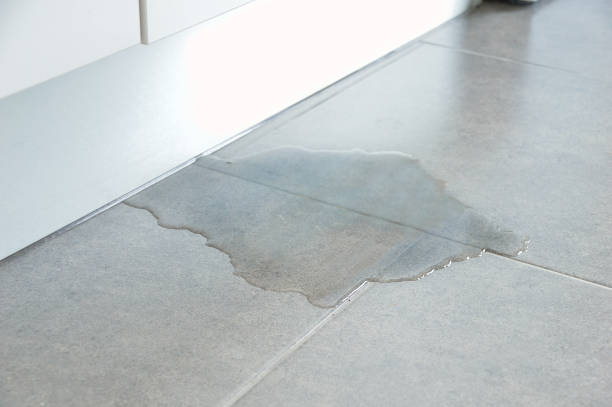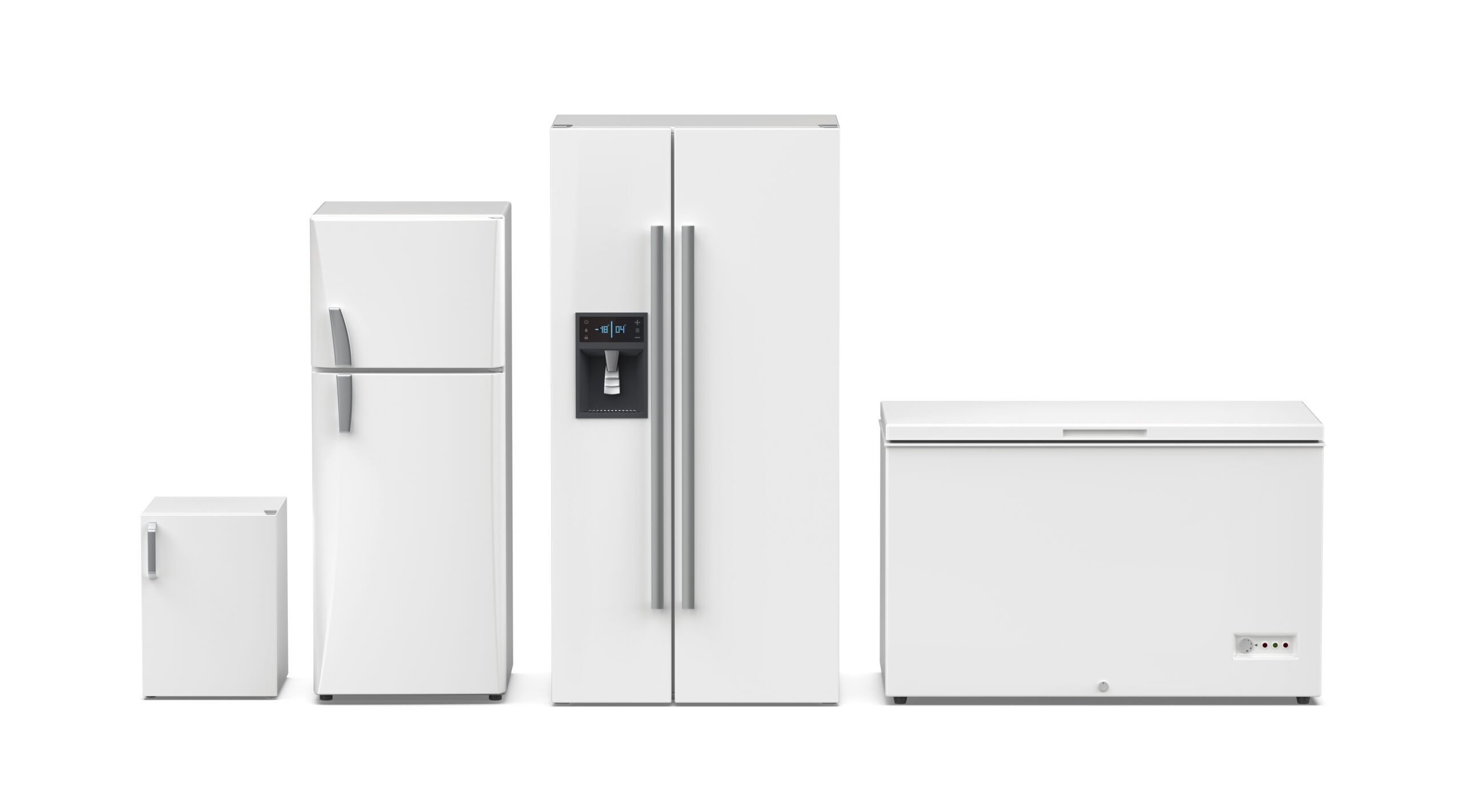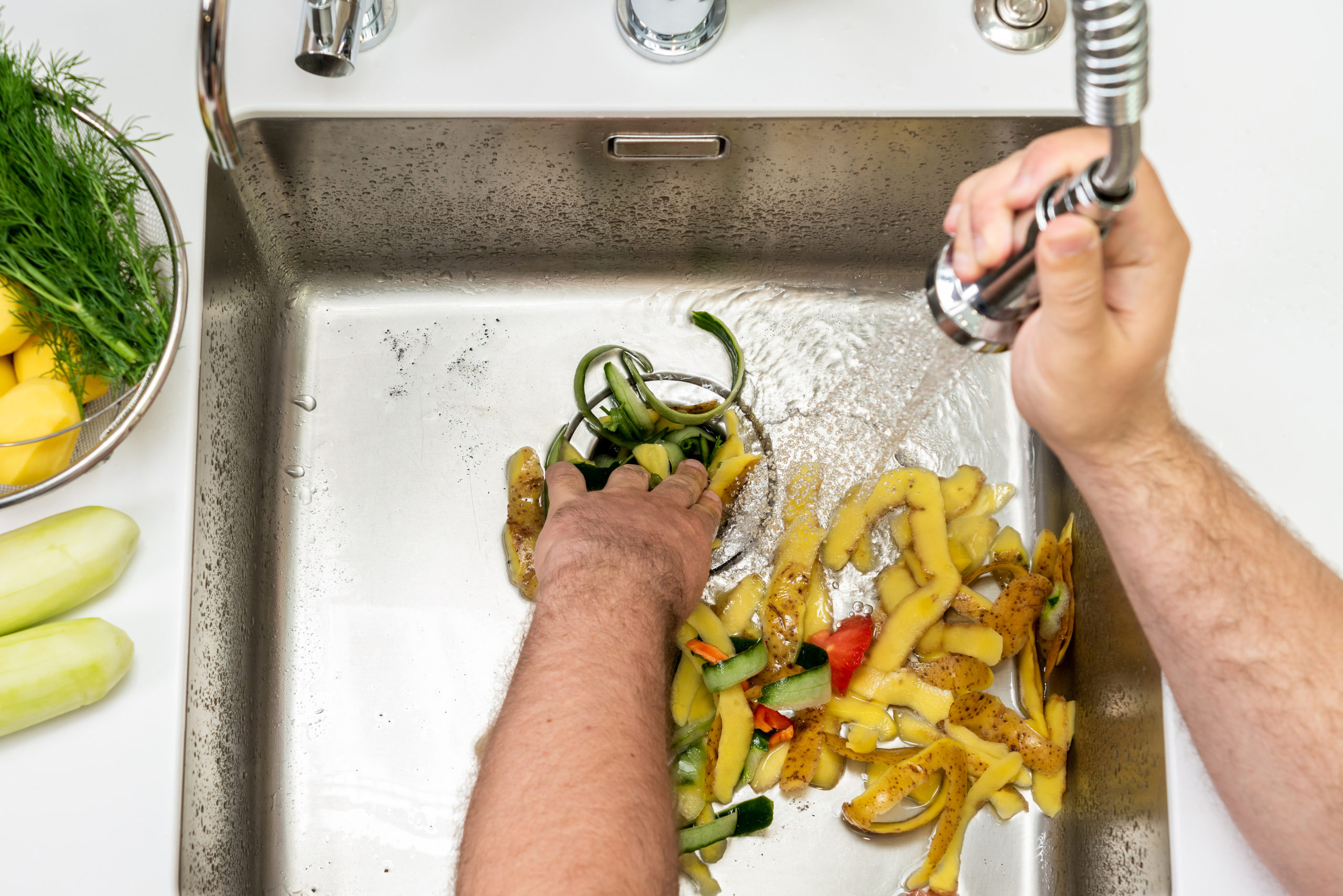
Oh no, the freezer is leaking water! Don’t panic just yet; the water at the bottom of a freezer doesn’t always mean there is something wrong. Some freezers can have a small bit of water pooling during defrost cycles before the water moves to the drain tube. The different methods to remove the water created from defrost cycles can vary wildly among the different makes and models on the market. In most scenarios, the manual for your specific model will explain to you the defrost cycle method used and will even tell you where you may see the occasional water/condensate. If you can’t find your paper manual, check the manufacturer’s website.
Still, thinking your freezer is leaking water inappropriately and asking yourself “why is my freezer leaking?” First, is there water inside the refrigerator? Do you have some pooling on your kitchen floor? Let’s examine the five most likely scenarios when you’re experiencing water leaking out of the freezer:
- The drip pan may be full.
In most setups, the freezer drain hose sends the melted water from the defrost cycles down to the drip pan, most usually living under your entire unit. The pan will fill and leak onto the floor if it doesn’t evaporate quickly enough or if you don’t have a pump sending the water to a drain. Simply empty your drip pan, and you’ll be good to go.
- The drain hose may have become plugged or corroded.
Should the drain hose from your freeze get clogged, the water can back up and leak out of the nearest available vulnerability. Buildup from years of use, dirty environments, or even rodents can cause unexpected clogging in the drain hose. Corroded hoses can have weak spots that will eventually become brittle and crack – in which case; you can just replace the hose.
- The drain hose may have separated from the drain spout.
This can happen when you move your unit around to clean or rearrange the room. If the hose clamp has slid off the spout, you should be able to reattach and retighten the clamp with a screwdriver to solve the issue.
- Your freezer door isn’t closing all the way, or there isn’t a proper seal around the door.
Believe it or not, it could be something as simple as the freezer being over-filled with food or other frozen material. If the door doesn’t latch or seal firmly, the freezer won’t be able to regulate temperature efficiently. Make sure none of your items are blocking the door from closing all the way.
If the sealant stripping is tearing around the door, you might need to replace it to solve the problem.
- There is something electronically or mechanically amiss.
You may have to call us if you’ve been able to determine it’s not one of the previous four scenarios causing your water pooling problems. Appliance Repair 512 provides freezer repair services to Austin and the surrounding area, including fixing a freezer that is leaking water. It is possible there is something wrong within the unit itself, causing the defrost cycle to happen too frequently or not allowing your unit to get down to appropriate freezing temperatures in the first place. We’ll figure it out for you.
Call (512) 351-7624 or contact us to schedule service. We look forward to restoring your freezer to excellent working condition.
continue reading
Related Posts
Refrigerators come in a variety of sizes and configurations. If you’re in the market for a new fridge, you may be wondering what size is right for your kitchen. There are a few different things to consider when it comes to choosing a refrigerator that is the appropriate size for […]
If you’re looking to upgrade your kitchen, an over-the-range microwave is a great addition. It not only saves counter space but also adds to the overall aesthetic of your kitchen. However, installing an over the range microwave is often a daunting task for many homeowners. The good news is that […]
Garbage disposals can be very convenient. You rinse food scraps right off the plate or cutting board and run the disposal until they disappear down the drain. It keeps smelly food out of your trash and prevents your drain from clogging. However, this is only the case if your disposal […]



